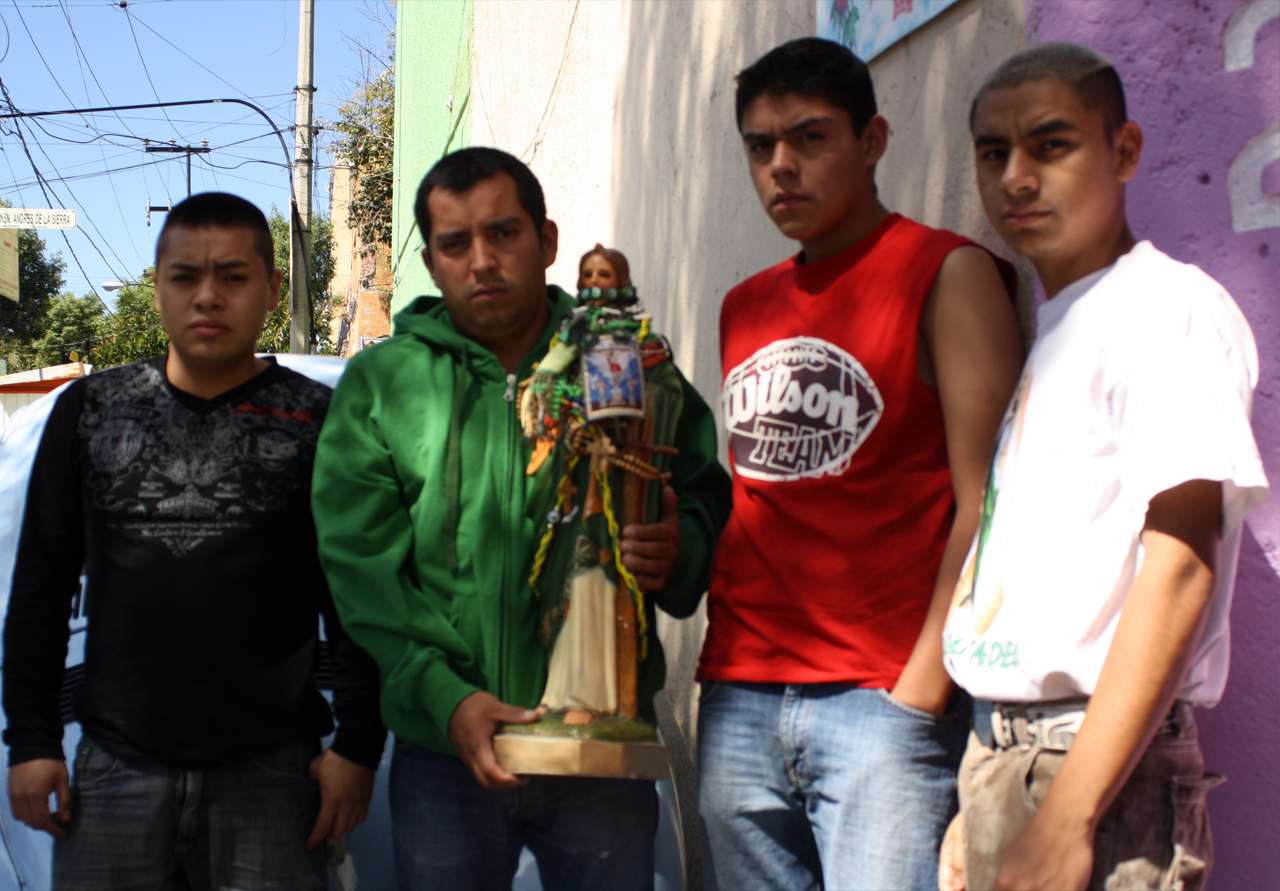EACH SAINT JUDE HAS A STORY

You ask him a question., Mexico City. 2010
"I ask, should I do the wrong thing or should I better stop; and that's when I entrust myself to him"

In good times and bad, Mexico City. 2010
"A cousin had a very strong problem, and they chased us with guns and I began to pray and ask San Juditas to protect us, and well, here I am."

"At la cana", Mexico City. 2010
"This tattoo was made at jail."
It was my offering, Mexico City. 2010
"Whether you want it or not there are times that I don't have money, and there are times that I go out and want to steal, but he stops me."

I have two, Mexico City. 2010
"Asking him for something? No, nor like asking him to grant me something, since I don't like asking for favors."
He is always with me, Mexico City. 2010
"For what I was or what I did before the fear that the same thing does not happen again is latent. More than anything because once you are out, you still have temptations."

Malinchism, Mexico City. 2010
"I hope my children have blue eyes, just like my San Judas."
Syncretism, Mexico City. 2010
Interestingly this image portrays a Catholic Saint with an Aztec attire, which is testament of the religious and cultural syncretism that shapes present-day Mexico.

My San Juditas have a place, Mexico City. 2010
"Well, life there, you know as they say, it is the most expensive hotel in the world so I dedicated myself to do this, pictures, San Juditas."

A plethora of pleas, Mexico City. 2010
"On October 28th, the devotees who go to visit him exceed 100,000."
Religion, Identity and Marginalization
EACH SAINT JUDE HAS A STORY
MEXICO CITY, 2010RELIGION, IDENTITY AND MARGINALIZATION introduces viewers to youth devotees in conditions of socio-economic vulnerability and marginalization, who turn to San Juditas or Santa Muerte to protect them from the uncertainties of their everyday lives. This project seeks to demonstrate the realities that youth devotees face—the fears, aspirations, and complexity of their life—to establish a dialogue surrounding their experiences and shift the conversation from negative stigmatization to a deep understanding of their devotees. They are people who are looking for a place and a sense of belonging in a society that has denied them access to education, work, and health care; ignored by everyone but San Judas or Santa Muerte. These Saints offer hope to a sector of the population threatened with hopelessness. Thus, by getting to know what individuals ask from them, one can grasp the struggles and challenges that the country is facing as a whole.
Altogether, the study of La Santa Muerte and San Judas Tadeo provides a lens with which to understand not only the socio-economic and ideological milieu of present-day Mexico, but also the processes that have shaped a sector of the Mexican society who, that retaining their traditions and rituals after colonization, turn to la Santa Muerte or San Judas to protect them from the uncertainties of their everyday lives.
Copyright. Ámbar Reyes 2019